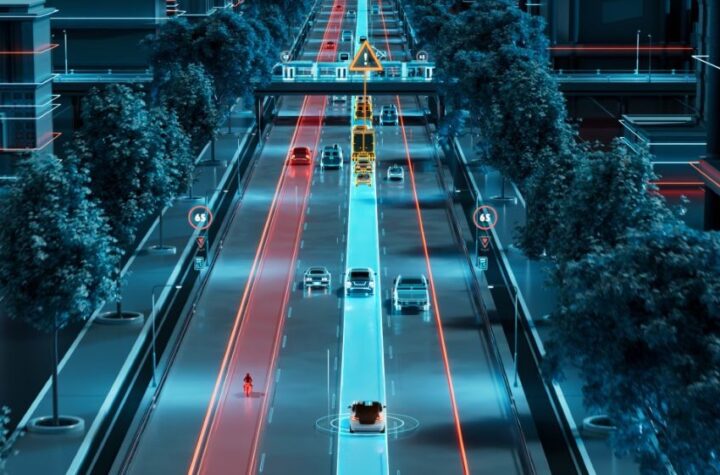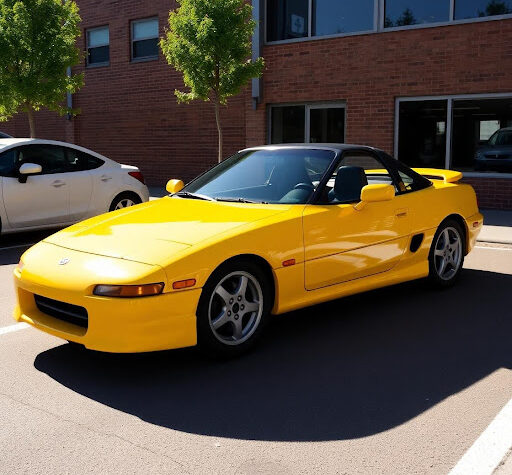
The world’s largest manufacturers of sound and vibration solutions, Brüel & Kjær has a number of leading automotive companies on its client list. Brüel & Kjær’s has a range of solutions for automotive OEMs for testing powertrains, exterior of vehicles, vehicle interior and chassis for noise, vibration and harshness, or NVH. The company’s NVH solutions are built on its highly customizable and scalable PULSE™ platform. Among the advanced sound and vibration solutions offered by Bruel&Kjaer are the noise mapping products utilizing arrays of acoustic sensors to locate and quantify noise sources, and the NVH Vehicle Simulator, a technology with enables engineers, vehicle designers and managers to design the sound of the vehicle and drive, hear and feel virtual cars in a realistic context long before physical prototypes are available.
The NVH Vehicle Simulator technology enables virtual vehicle prototyping for vehicle sound and vibration characteristics. Better decisions can be made about the NVH characteristics faster and with higher confidence using the NVH vehicle simulator. At the start of a vehicle program, it is used to understand sound character preferences of consumers and to set overall vehicle sound quality targets. It also gives chief engineers and management the ability to experience what the future vehicle will sound like and sign off on sound and vibration targets at the start of the vehicle program. During the entire development cycle, design alternatives, changes and trade-offs can be simulated and experienced in the simulator to fully understand the impact upon the sound characteristics of the vehicle. Instead of looking at two numbers or a graph showing the difference, the engineers and managers can actually drive a vehicle with the different design alternatives and evaluate them in a realistic virtual environment. The NVH Simulator is also used as a benchmarking and training tool, enabling engineers to demonstrate different vehicles back to back and train others on various NVH phenomena.
One of the first North American car-manufacturer to use Brüel & Kjær’s PULSE™ NVH Simulator is the Ford Motor Company. Ford uses the PULSE™ NVH to simulate the interior sound of a vehicle under a variety of driving conditions, at different speeds and on various road surfaces conveying sense of quality and performance before the first prototype is even built. “Ford uses the PULSE NVH Vehicle Simulator to eliminate mistakes up front, reduce the need for prototyping, shorten the time to market, and produce a product that not only delivers high-end interior quietness, but also provides vehicle sounds that are more engaging for the customer,” says Mark Clapper, Technical Leader for Noise, Vibration and Harshness at Ford.
Ford uses the NVH Simulator as it accurately recreates the noise and vibration of a vehicle in a user-interactive environment. This ensures the R&D department’s best possible use of customer preferences and satisfaction profiles, specific differentiations towards competitors as well as a design unique profile for the concept and design development stages that provide much faster and more efficient way of working with future design of vehicle sound and vibration.
The NVH Vehicle Simulator is available in three basic configurations – there is the desktop NVH Simulator used in R&D offices which helps the development team design the sounds of the vehicle and experience them driving through free-driving scenarios that can be changed in a split second and show the resulting noise changes. Another version of the simulator is the full-vehicle NVH Simulator, combining sound and vibration in a stationary vehicle body. The driver or evaluator sits in the vehicle and drives using the steering wheel, pedals and gear shift of the vehicle, while visuals are projected on a screen in front of the vehicle. With sound, vibration, and visual scenery combined with the natural driving environment of the vehicle interior, this is an ideal way to run NVH evaluation studies in a controlled and fully-immersive virtual driving environment. The third version is the On-Road Vehicle NVH Simulator which incorporates the NVH simulator into an actual drivable vehicle. Here the evaluator drives an actual real vehicle while experiencing the sounds of other vehicles, whether those vehicle sounds are competitive benchmark vehicles, target sounds for future vehicles (i.e. virtual prototype sounds), or modifications to component sounds like the sound of the exhaust system. The sound of the vehicle driven can be changed by modifying various frequencies, the harmonic balance of various vehicle components and the balance of various parts of the vehicle sound such as engine, road and wind noise. The sounds of the existing vehicle are modified rather than replaced resulting in a very natural presentation of the target sounds.. A sedate sedan can have the sound of a performance car, and vice versa. This allows the test driver to evaluate the various vehicle sounds in an extremely realistic manner.
Nissan is one of the OEMs that currently use the On-Road Simulator for developing and evaluating the acoustic environment and acoustic comfort of new vehicles on a global scale. “With the On-road Simulator as a core development tool, the US, Japan and Europe are already sharing road noise models for global benchmarking and target setting. By sharing and comparing data, we can change the global development process and get more accurate results with fewer prototypes”, says David Quinn, Manager of NVH Development, Nissan UK.
The vehicles created in the NVH simulator can be very simple, accurate models of the sound at the driver’s position, or they can be very detailed, created from sound and vibration data of the specific sources of vehicle sound such as tires, engine, wind, etc. Typically it is very little additional effort to create NVH Simulator models of vehicles over and above the data automakers already routinely measure and collect. The data used to create these vehicle models in the NVH Simulator can come from real vehicles, component tests or CAE results. Jaguar Land Rover use the NVH Simulator in their vehicle development process, incorporating both CAE and measured data in their virtual vehicles. “Our CAE colleagues really like the NVH Simulator. They can use it to experience the real effects of their predicted CAE modifications. This is a key capability in the decision making process.” Dr. Garry Dunne, Senior Technical Leader, Vehicle NVH, Jaguar Land Rover.
Another automotive OEM that uses Brüel & Kjær’s solutions is the FIAT Group which uses the company’s wind tunnel test programs as well as its most advanced noise-mapping solutions. “At Fiat’s Aerodynamics Department we are responsible for the test programs for exterior as well as interior noise measurements. At the concept stage we have to define all the components and we start with virtual simulation, then on to the next level of style models, and finally to test programs in the real vehicle to verify or to optimize the aero acoustic performance before production.
“This, of course, includes many different tasks, but our main objectives in the wind tunnel programs are contributions to target setting, benchmarking and verification of components, comparison of alternative components, troubleshooting and competitor analysis. An important part of our decision to choose Brüel & Kjær as preferred supplier for the wind tunnel test programs was the fact that they could provide everything we needed for our measurements –from microphones and accelerometers to the most advanced noise mapping solutions,” says Marco Stellato, who is in charge of wind tunnel testing at FIAT.
Brüel & Kjær’s noise-mapping solutions include planar and spherical beamforming, sound intensity, stationary and non-stationary nearfiled acoustic holography, conformal noise mapping (mapping radiated sound to complex surfaces), and both indoor pass-by noise testing and vehicle pass-by noise testing.
As a global company Brüel & Kjær has sales offices in 55 countries and over 500 employees. The company has three business units – sound and vibration measurement, LDS test and measurement and Lochard environmental management solutions or EMS. Last year Brüel & Kjær acquired Australian firm Lochard Ltd in order to expand its product offerings with EMS. “Environment Management Solutions is a strategic growth area and the acquisition of Lochard increases the breadth of products and services that Brüel & Kjær can provide its customers. Increasing regulation on permissible noise levels means that city administrations and businesses, as well as airport and airline operators, are demanding sophisticated solutions for monitoring and managing noise. Lochard’s NoiseOffice, a suite of managed noise services, provides an ideal solution to our clients who need to do more with less,” said Lars Rønn, Managing Director at Brüel & Kjær last year.
Automotive Industries spoke to David Bogema, Senior Application Engineer, Brüel & Kjær North America Inc.
AI: Tell us how effective NVH testing is when it comes to OEMs making early decisions in advance of the first physical prototypes.
Bogema: NVH Assessment can be very effective far in advance of having physical prototypes. NVH testing of benchmark vehicles and components can be combined and manipulated to create target sounds for the new vehicle even at the very start of the program. These can be experienced and assessed in the NVH Simulator. This gives program managers and engineers something to agree on both subjectively and objectively as NVH targets for the new vehicle. Further, as the program progresses, changes to the vehicle design can be modeled and experienced, without the need to have a physical prototype.
As components become available for testing, NVH tests can be performed on these, including noise-mapping tests which will pinpoint areas that need improvement long before the component is used in a full prototype vehicle.
AI: What makes your company’s NVH solutions so effective to automotive manufacturers?
Bogema: It’s a combination of out experienced technical staff and state-of-the-art products that makes it possible to help the automotive manufactures so effectively. We can deliver full solutions to the manufacturers, utilizing both our extensive automotive NVH experience and our products designed to make NVH testing, analysis, interpretation and evaluation simple and intuitive.
AI: What do you attribute Brüel & Kjær’s growth in the North American market to?
Bogema: Bruel & Kjaer is the world’s largest sound and vibration company, with expertise in virtually every sector of sound and vibration testing and analysis. We have a very strong team here in North America focused on automotive NVH. We have used our experience in automotive NVH and leveraged our experience in other sound and vibration sectors to develop solutions that help our customers in designing, measuring, and understanding the NVH characteristics of their vehicles. We work with our customers to help them achieve their NVH goals.




More Stories
TomTom’s Orbis Maps with 3D Lane geometry set new standards for mapping precision
Accelerating The Development of Hydrogen Vehicles & Infrastructure – Europe’s Biggest Players Meeting at Premier Event
Automotive IQ Announces the 15th Annual Automotive Functional Safety Week 2025